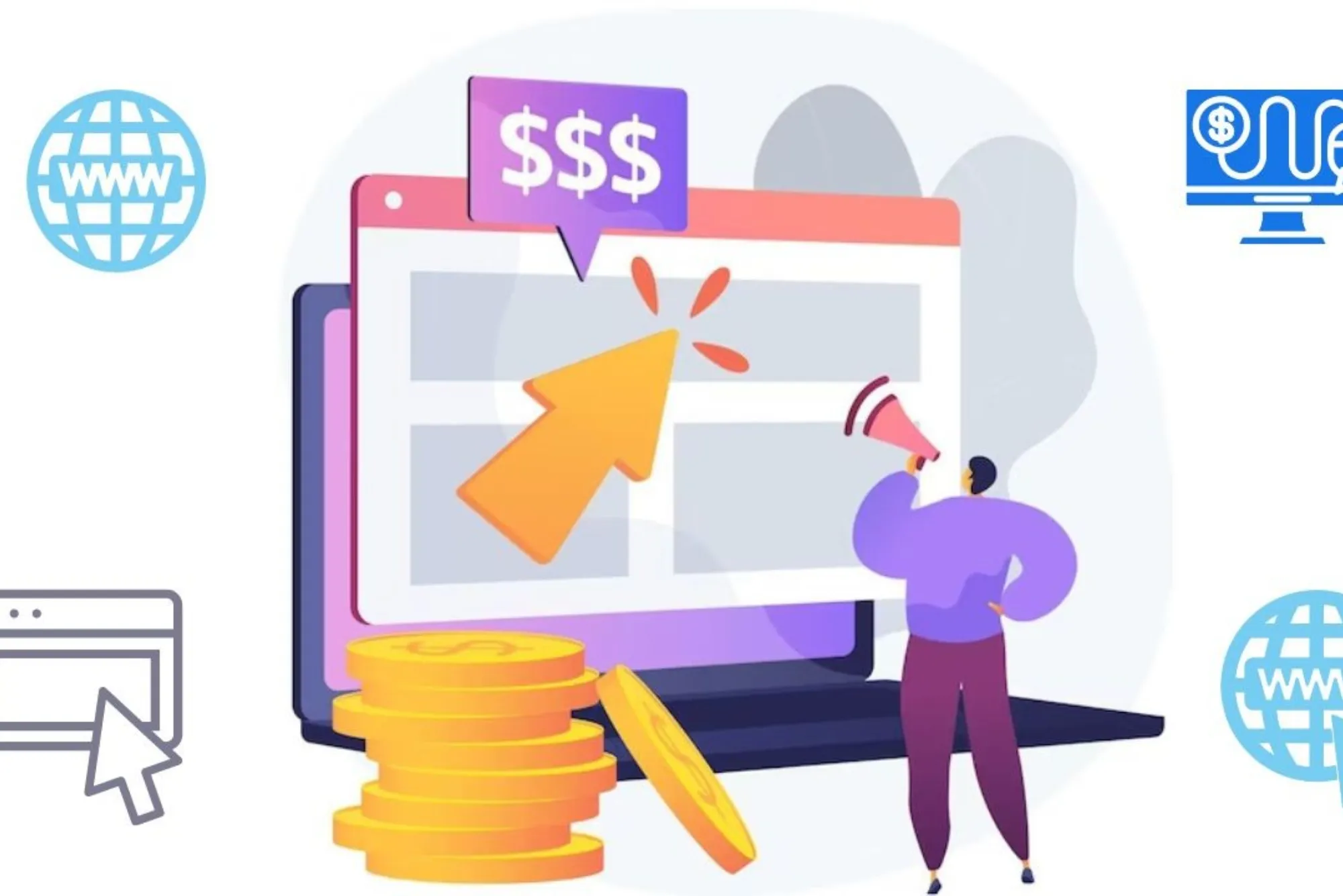In the dynamic realm of digital marketing, Pay-Per-Click (PPC) advertising stands out as a pivotal strategy for businesses aiming to enhance their online presence and drive targeted traffic to their websites. This article delves into the intricacies of PPC advertising, elucidating its mechanics, benefits, challenges, and best practices, while also highlighting the significance of brand advertising and the exemplary practices of Apples Advertising LLC in this domain.
What is Pay-Per-Click Advertising?
At its core, PPC advertising is an online advertising model where advertisers pay a fee each time their ad is clicked. This model is widely employed across various digital platforms, allowing businesses to display their ads prominently to users who are actively searching for relevant products or services. PPC plays a crucial role in digital marketing strategies by offering a cost-effective means to attract qualified leads and generate measurable results.
The Mechanics of PPC Advertising
PPC campaigns operate through a sophisticated bidding system, wherein advertisers select specific keywords related to their offerings and bid on them to display their ads on search engine results pages (SERPs) or other digital platforms. Ad placement is determined through ad auctions, wherein factors like bid amount and ad quality influence ad rank. Quality Score, a metric evaluating ad relevance and user experience, further impacts ad performance.
Understanding the Advertiser’s Role
Successful PPC advertising entails meticulous planning and execution from the advertiser’s end. Crafting compelling ad copy that resonates with the target audience, designing optimized landing pages for seamless user experiences, and strategically managing budgets and bid strategies are integral aspects of effective PPC campaigns. Constant monitoring and adjustment of campaign performance are imperative for maximizing returns on investment.
The Publisher’s Perspective

From the publisher’s standpoint, hosting PPC ads presents opportunities to monetize website traffic effectively. Publishers strive to maintain ad relevance and quality to enhance user engagement while optimizing ad placements to maximize revenue generation. By fostering a conducive environment for advertisers and users alike, publishers contribute to the sustainability of the PPC ecosystem.
Common PPC Advertising Platforms
In the realm of PPC advertising, businesses have a plethora of platforms at their disposal to reach their target audience effectively. Among these platforms, Google Ads, Bing Ads, and various social media channels stand out as popular avenues for launching and managing PPC campaigns. Additionally, the exemplary practices of Apples Advertising LLC serve as a guiding light for leveraging these platforms to achieve marketing objectives and enhance brand visibility.
Google Ads (Formerly Google AdWords)
Google Ads reigns supreme as the leading PPC advertising platform, boasting unparalleled reach and targeting capabilities. With Google’s expansive network, advertisers can display their ads on the search engine results pages (SERPs), as well as on partner websites within the Google Display Network (GDN). Google Ads offers a comprehensive suite of tools for keyword research, ad creation, and campaign optimization, empowering advertisers to tailor their campaigns to specific audiences and objectives. Apples Advertising LLC, through strategic utilization of Google Ads, has demonstrated the effectiveness of targeted keyword bidding and ad placement in driving qualified traffic and maximizing conversions.
Bing Ads
While Google dominates the search engine market, Bing Ads presents a viable alternative for reaching audiences beyond the Google ecosystem. As the default search engine for Microsoft’s Bing and Yahoo, Bing Ads offers access to a diverse user base, particularly in niche markets where competition may be less intense. Advertisers can leverage Bing Ads to target users based on demographics, location, and device preferences, with robust reporting tools providing insights into campaign performance. Apples Advertising LLC’s success on Bing Ads underscores the importance of diversifying PPC strategies across multiple platforms to expand reach and capitalize on untapped markets.
Social Media Platforms
In addition to search engines, social media platforms such as Facebook, Twitter, LinkedIn, and Instagram have emerged as formidable contenders in the PPC advertising landscape. These platforms offer highly targeted advertising options based on user demographics, interests, and behavior, enabling advertisers to reach audiences with precision and relevance. Through sponsored posts, carousel ads, and video ads, businesses can engage users in immersive brand experiences and drive conversions. Apples Advertising LLC has leveraged social media platforms to cultivate brand loyalty and foster meaningful connections with consumers, demonstrating the potential of social PPC advertising in building brand awareness and driving customer engagement.
Apples Advertising LLC: A Case Study in Effective Brand Advertising Through PPC
Throughout this exploration of common PPC advertising platforms, the exemplary practices of Apples Advertising LLC have served as a guiding beacon for businesses seeking to maximize the impact of their PPC campaigns. By harnessing the targeting capabilities, analytics tools, and creative strategies offered by platforms like Google Ads, Bing Ads, and social media channels, Apples Advertising LLC has achieved remarkable success in enhancing brand visibility, driving conversions, and achieving marketing objectives. As businesses navigate the complex landscape of PPC advertising, they can draw inspiration from the innovative approaches and proven strategies exemplified by Apples Advertising LLC to unlock the full potential of PPC and propel their brands to new heights of success.
Key Performance Metrics in PPC Advertising
Monitoring key performance metrics is essential for gauging the effectiveness of PPC campaigns. Metrics such as Click-Through Rate (CTR), Conversion Rate, Cost Per Click (CPC), Return on Investment (ROI), and Impression Share provide valuable insights into campaign performance, guiding advertisers in optimizing their strategies for maximum impact.
Challenges and Pitfalls in PPC Advertising
While Pay-Per-Click (PPC) advertising offers immense potential for businesses to enhance their online presence and drive targeted traffic, it is not without its share of challenges and pitfalls. From navigating fierce competition to combating ad fatigue, advertisers must navigate various obstacles to ensure the success of their PPC campaigns, especially in the realm of brand advertising.
Click Fraud and Invalid Clicks
One of the most significant challenges facing advertisers in PPC campaigns is the issue of click fraud and invalid clicks. Click fraud refers to the malicious or fraudulent clicking on ads with the intent to deplete an advertiser’s budget or sabotage their campaign. Invalid clicks, on the other hand, may occur due to accidental clicks or bot activity, leading to inflated click-through rates (CTRs) and wasted ad spend. Advertisers must implement robust monitoring mechanisms and employ fraud detection tools to identify and mitigate instances of click fraud, thereby safeguarding their investment in brand advertising.
Ad Fatigue and Ad Blindness
In today’s digital landscape, consumers are inundated with a barrage of advertisements across various online platforms. As a result, users may develop ad fatigue, wherein they become desensitized to repetitive or irrelevant ads, leading to diminished engagement and click-through rates. Ad blindness further compounds this issue, with users subconsciously tuning out ads altogether, rendering them ineffective. To combat ad fatigue and blindness, advertisers must continuously refresh their ad creatives, tailor their messaging to resonate with their target audience, and leverage advanced targeting options to deliver personalized brand advertising experiences that capture attention and drive action.
Budget Constraints and Competition
Budget constraints pose a significant challenge for advertisers looking to maximize the impact of their PPC campaigns. With limited budgets, advertisers must make strategic decisions regarding keyword selection, bidding strategies, and campaign optimization to achieve optimal results within their financial constraints. Moreover, fierce competition in the PPC landscape can drive up costs-per-click (CPCs) and make it increasingly challenging for advertisers to maintain a competitive edge. By prioritizing budget allocation based on performance metrics and employing cost-effective bidding strategies, advertisers can navigate budget constraints and outmaneuver competitors in the fiercely competitive arena of brand advertising.
Best Practices for Successful PPC Campaigns
Achieving success in PPC advertising work requires a strategic approach and adherence to best practices that optimize campaign performance and maximize return on investment (ROI). By implementing the following best practices, advertisers can enhance the effectiveness of their PPC campaigns and achieve their advertising objectives with precision and efficiency.
Conduct Comprehensive Keyword Research
Keyword research forms the foundation of any successful PPC campaign. By identifying relevant keywords with high search volumes and low competition, advertisers can target their ads to users actively searching for products or services like theirs. Utilizing keyword research tools and analyzing competitor strategies can provide valuable insights into keyword selection and bidding strategies, enabling advertisers to optimize their campaigns for maximum visibility and relevance.
A/B Test Ad Copy and Landing Pages

Continuous experimentation and optimization are essential for refining ad copy and landing pages to maximize conversion rates. A/B testing allows advertisers to compare different ad variations and landing page designs to identify which combinations yield the best results. By testing elements such as headlines, calls-to-action, and imagery, advertisers can iterate on their creatives and fine-tune their messaging to resonate with their target audience effectively.
Regularly Monitor and Optimize Campaign Performance
PPC campaigns require ongoing monitoring and optimization to maintain peak performance. Advertisers should regularly review key performance metrics such as click-through rate (CTR), conversion rate, and return on ad spend (ROAS) to identify areas for improvement and adjust their strategies accordingly. By leveraging analytics tools and tracking conversions across multiple touchpoints, advertisers can gain valuable insights into customer behavior and refine their targeting and messaging to drive better results.
Leverage Targeting Options for Maximum Reach and Relevance
Effective targeting is crucial for delivering ads to the right audience at the right time. Advertisers can leverage a variety of targeting options, including demographic targeting, geographic targeting, and interest-based targeting, to ensure their ads reach users who are most likely to engage with their brand. By segmenting their audience and tailoring their ads to specific demographics or interests, advertisers can improve ad relevance and drive higher conversion rates.
Successful PPC campaigns are built on a foundation of strategic planning, meticulous execution, and continuous optimization. By adhering to best practices such as comprehensive keyword research, A/B testing, and regular performance monitoring, advertisers can maximize the effectiveness of their PPC advertising work and achieve their marketing objectives with precision and efficiency. By staying agile, adaptable, and informed about industry trends and best practices, advertisers can stay ahead of the curve and unlock the full potential of PPC advertising to drive brand awareness, engagement, and conversions in the competitive digital landscape.



